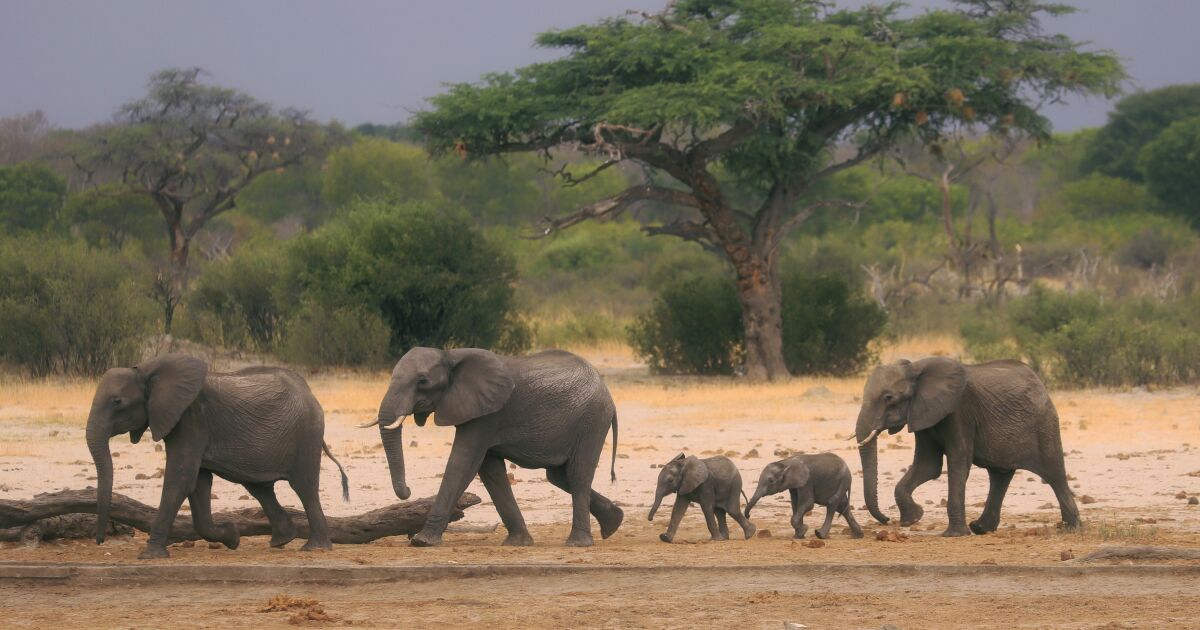Development and climate threaten wildlife in Africa

Africa’s national parks, home to many species including lions, elephants and buffaloes, are at risk of lack of rain and new infrastructure projects.
Protracted drought across much of East Africa, exacerbated by climate change, and large-scale development projects, such as oil drilling and livestock farming, are colluding against efforts to conserve protected areas, according to several experts in the surrounding environment.
Endangered parks range from Kenya in the east, where the Tsavo and Nairobi national parks are, to the south, and include the Mukumazi and Serengeti National Parks in Tanzania, Kirimbas and Gorongosa in Mozambique and the famous Kruges in South Africa. To the west are the Kahuzi Biega, Salonga and Virunga reserves in the Congo.
Parks not only protect animals and plants, but also absorb carbon dioxide from the air and reduce the impact of global warming.
According to Ken Mwathe of BirdLife International, an estimated 38% of Africa’s biodiversity areas are at serious risk from climate change and infrastructure projects.
“There are areas with abundant biodiversity, especially in Africa, that investors see as unproductive and conducive to development,” Mwathe said. “The government grants land in these areas for infrastructure projects,” he added.
“Power lines and other power infrastructure cause birds to crash due to poor visibility. Many birds die for this reason,” he added.
In an effort to improve living standards, achieve sustainable development goals – such as access to clean water and food – and boost job creation and economic growth and improve the quality of education, African governments are pointing to large projects, many of which are funded by foreign investors, particularly from China.
For example, the planned pipeline would cross the Kidebo Valley, Murchison Falls and the Bwindi Impenetrable Forest in Uganda, which would threaten many species and be criticized by climate activists.
According to conservationists, urban population growth and the resulting construction, such as roads, power lines, gas pipelines, ports, and railways, is also detrimental to the welfare of parks.
They claim that replacing wildlife with infrastructure is not the right approach to boosting economic growth.
“We must have a future where wildlife is inseparable from humans,” said Sam Shaba of Tanzania’s Honey Guide Foundation, an environmental non-profit organization.
“When people start seeing that wildlife provides answers to sustainable development, everything will change,” Shaba said.
Most African parks were established in the late 19th and early 20th centuries by colonial governments who sealed off areas and ordered indigenous peoples out. But now conservationists say a more holistic approach and insights from the indigenous communities who live next to the parks can help protect them, according to Ademola Ajagbe, the nature conservation organization’s regional director.
“People in these areas are forcibly evicted or prevented from living there, as is the case with the Maasai (in Tanzania and Kenya), the Twa and the Mbutis (in Central Africa), who for generations have lived with the wildlife,” said Simon Konsell, consultant for Survival International.
“Africa is presented as a land with a lot of wildlife and no one living in it. This is a narrative that needs to change,” Concel said.
“If we don’t pay attention to the social needs of communities, we are missing a key component,” said John Kasuna, Executive Director of Integrated Rural Development with Nature Conservancy in Namibia.
Experts say the effects of deteriorating weather conditions in national parks cannot be ignored.
A recent study in Kruger National Park has linked extreme weather events with the loss of plants and animals, which cannot adapt to new conditions and lack water due to long droughts and high temperatures.
Philip Wandera, a former ranger in the Kenya Wildlife Service who is now a lecturer at the Catholic University of East Africa, said drought is threatening species such as rhinos, elephants and lions by reducing the amount of food available.
Stricter management of parks and removal of fences that prevent species from migrating to less arid areas are important steps to protecting wildlife, according to Wandera.
He noted that the financial support “would help the communities in the area,” which in turn would cooperate in the preservation of public parks.

“Professional problem solver. Subtly charming bacon buff. Gamer. Avid alcohol nerd. Music trailblazer.”




:quality(75)/cloudfront-us-east-1.images.arcpublishing.com/elcomercio/6NEH6FMKYBCU7JJWZ5GVRZKTRM.jpg)
/thumbs.vodgc.net/1-14-FnXFWZ1684253239488_1080P.jpg)





